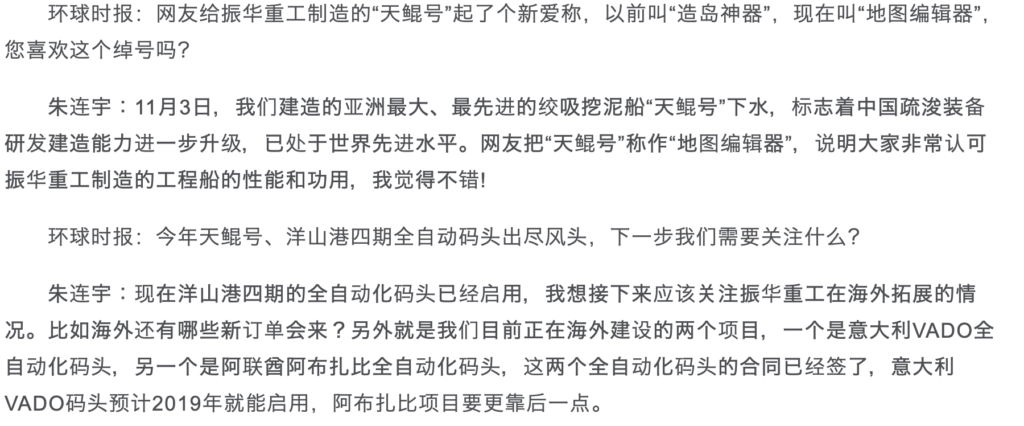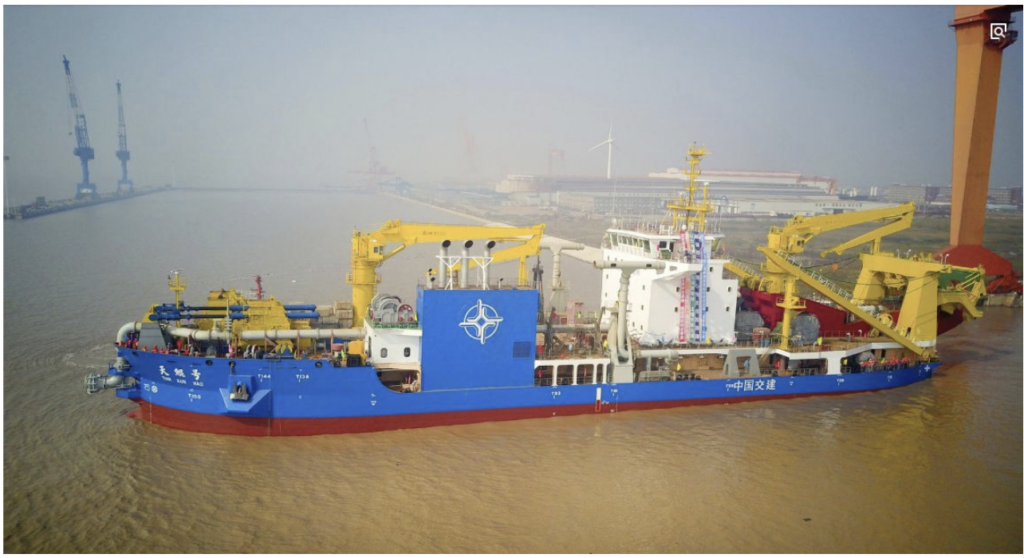THE RUNDOWN
Recent U.S. media reporting indicates that the American government is concerned about Chinese-made cargo cranes in ports across the United States. The cranes may be used to gather intelligence on supplies shipped in or out of the United States or on supplies used to support military operations around the globe. Chinese company Zhenhua Heavy Industries (ZPMC) makes these low-cost cranes. According to reports, they have sophisticated sensors that can register and track the origin and destination of cargo containers.
The parent company of ZPMC is China Communications Construction Company, the main contractor for China’s Belt and Road Initiative. The U.S. government has prohibited American companies from exporting technology to five subsidiaries of ZPMC’s parent company. Strike Source took a deeper look at ZPMC to see its military connections.
Military Civil Fusion
Military Civil Fusion (MCF) is a national strategy of the Chinese Communist Party (CCP) to develop the People’s Liberation Army (PLA) into a “world-class military” by 2049. The CCP is reorganizing China’s science and technology enterprises to advance economic and military development. Xi Jinping, China’s president, chairs the Central Military Commission and the Central Commission for Military-Civil Fusion Development, highlighting the importance of MCF to the CCP.
China has built several islands in the disputed waters of the South China Sea. The Chinese strategy in the region has been to militarize artificial islands; in doing so, they can declare the seas and airspace around the island as restricted. There have been several incidents of U.S. aircraft flying near the islands and receiving messages from the Chinese military advising them to reverse course.

Zhu Lianyu is the former chairman of Zhenhua Heavy Industries, having stepped down from the role in 2021. In an interview with Chinese state media, he discussed the “Tian Kun.” A dredger manufactured by ZPMC was used to build artificial islands in the South China Sea. In an interview with Zhu, the interviewer stated the ship used to be called the “Island Building Artifact” but now is called the “Map Editor.” When asked whether he “likes” this nickname, Zhu pointed out that the new label acknowledges that “everyone recognizes the ship manufactured by Zhenhua Heavy Industry. I think it is good!”
Zhu described the Tian Kun as the “largest and most advanced cutter suction dredger.” According to a report by Chinese state media, the Tian Kun could fill five artificial islands in six months and dig six thousand cubic meters of soil in one hour. The ship is under export controls and cannot be sold outside of China.

American Ports
In 2021 the Defense Intelligence Agency (DIA) found that China could spy on U.S. military equipment at American ports. “DIA’s analytic efforts assist the U.S. military in anticipating and mitigating threats to global mobility, which relies in part on commercial transportation and shipping,” DIA spokesman Lt. Col. Dean Carter said. At the port of Baltimore in the same year, the FBI searched a cargo ship containing ZPMC cranes and found intelligence-gathering equipment on board. They did not specify what equipment was found.
In 2013, a Brookings study concluded that cybersecurity at American ports was nearly nonexistent. In a Jan 15th, 2015 meeting to discuss the development of maritime cyber security standards, Coast Guard officials reported that GPS signals were disrupted at an east coast port, affecting four cranes and resulting in seven hours of disrupted operations.
To counter this, the National Defense Authorization Act passed by Congress and signed in December 2022 by President Biden contained a provision to study cybersecurity and national security threats posed by foreign-manufactured cranes at American ports.
Rep Carlos Gimenez, a Republican from Florida and member of the Select Committee on China, also introduced a bill last year to ban purchasing Chinese cranes to combat security concerns.
THE TAKEAWAY
According to reports, Chinese intellectual property theft has cost the United States $225 billion to $600 billion annually. In recent years the United States and other countries worldwide have begun to take countermeasures against aggressive Chinese government behavior. Huawei, the Chinese smartphone and wireless technology company, has been banned by countries representing one-third of the world’s GDP. TikTok, a popular social media app owned by the Chinese company Bytedance has seen multiple countries ban government employees from using the platform due to security risks.
Zhenhua Heavy Industries (ZPMC) has the world’s largest market share for port machinery. They work hand in hand with the Chinese government to further the goals of the Chinese Communist Party. We assess that the United States and countries representing a large percentage of the global GDP will take a much tougher stance against the blatant disregard for international norms that have become standard for the CCP.
